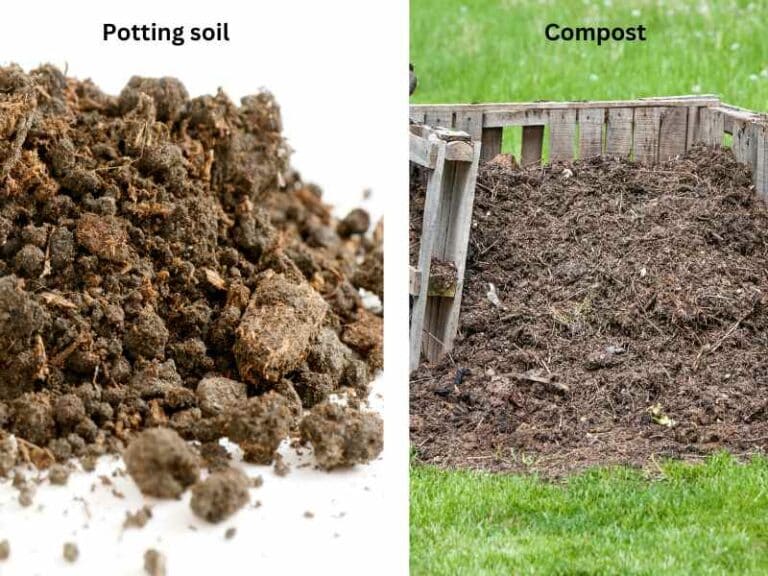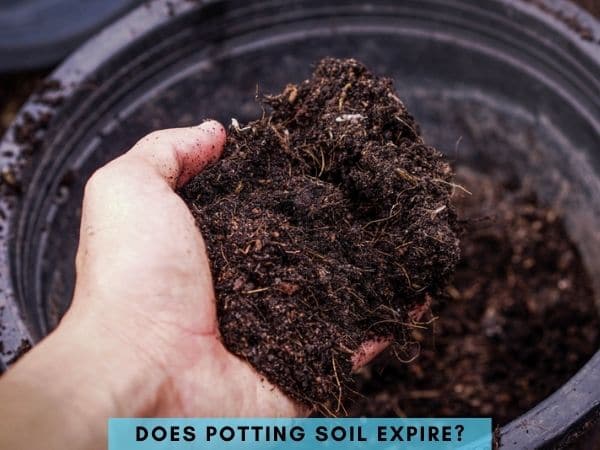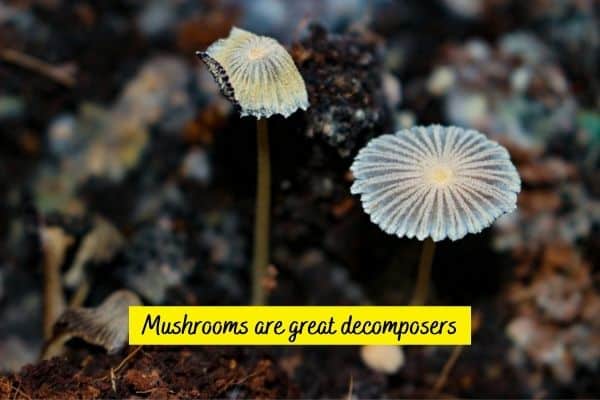What to Do With Old Potting Soil – Recycling Tips
I’ve run a nursery for years, and buying potting soil in bulk is normal for me. When the new planting season comes, I find myself with a lot of old potting soil. If you’re in the same situation, you’re probably wondering what you can do with the old potting mix.
Instead of throwing old potting soil away, use it as top-dressing material in your garden to facilitate seed germination. You can also spread it on your lawn, fill holes in the yard with it, or dump it in garden beds and compost piles.

There are many other ways of reconditioning and making old potting soil fit for planting. I’ve explained various useful ways you can recycle old potting mixes below.
Ways to use old potting soil
Old potting soil lacks nutrients and may contain pathogens but it’s not useless. You may need to rejuvenate and treat it to avoid putting your plants at risk of pests and diseases.
Here’s what you can do with old potting soil:
1. Use it as top-dressing material
Old potting soil contains humus and pieces of perlites, making it a good moisture-holding topdressing material. You can apply it to areas where you want to germinate seeds in your garden.
Simply spread a thin layer of the old potting soil on your raised garden beds, lawns, and nurseries where you want to germinate new seeds for planting.
2. Add it as a lasagna garden layer
Lasagna gardening or sheet composting is a technique of using organic matter to make planting beds. Organic materials are stacked in layers to allow them to decompose and release nutrients over time.
This is where old potting soil can be useful.
Add old potting soil as a layer in your lasagna garden to help enrich it with good microorganisms and organic matter that will speed up the decomposition of the pile.
You can start with old potting soil and then top it up with several layers of aged manure, kitchen waste, leaves, and grass clippings from your lawn.
3. Use it to fill holes in the yard
Used potting soil is the best filler for holes created by moles, critters, dogs, and other animals that dig in the yard.
For example, if you have rat holes in your lawn, you can close them up with old potting soil.
Simply walk around your yard and pour potting soil into the small holes. Tap them with your foot to harden the soil and prevent it from easily eroding away.
4. Add old potting mix to your compost
Adding old potting soil to a pile of decomposing compost is a great recycling method. Apart from adding nutrients to your compost, the microorganisms it contains will help the organic matter decompose quickly.
Ensure that you add sterile old potting soil to the compost to prevent infecting your plants with disease and pests.
I recommend removing any roots, stones (if any), and debris from the old soil mix before throwing the soil onto your compost.
How to rejuvenate old potting soil
Potting soil may seem useless because of the depleted nutrients, texture, and moisture retention capacity. However, you can still use it to plant if you treat and restore its potency.
Here is how you can rejuvenate your old potting soil:
1. Mix old potting soil with a fresh mix
You can use an old potting mix to add volume to your new soil mix that has not expired. It’ll help you avoid purchasing too much potting mix, especially if you have a plant nursery.
Mix the old and the new potting soil equally, then add an organic fertilizer to boost the nutrients. Only use old soil from previous healthy plants.
2. Heat-treat the old pot soil
Exposing old potting soil to high temperatures between 120°F and 212°F will kill pathogens and help sterilize the soil.
Below are two methods of sterilizing the old potting soil:
- Pour the used potting into a black plastic back, tie it tightly, then place it in a translucent plastic storage container outside in the sun.
- Put the used potting soil in a black plastic bag and place it in a parked car with rolled-up windows.
While it is okay to reuse potting soil, DO NOT use it to start seeds.
Is old potting soil harmful to plants?
Old potting soils pose several risks to plants if not treated and rejuvenated. The risks it carries include the following:
- Pathogens: Used potting soil may contain pathogens such as fungi, viruses, bacteria, and other disease carriers.
- Insufficient nutrients: Used soil lacks the nutrients to efficiently support plants’ healthy growth.
A rule of thumb is never to reuse old potting mixes from diseased plants to avoid infecting new ones.
Should I replace potting soil every year?
I recommend the annual replacement of potting soil to eliminate the chemicals deposited by plants and any potential pathogens.
To replace the potting soil, empty the pots at the end of every season, wash the containers with a sterilizing agent and dry them thoroughly. Add your new mixture to the pot and replant the plant.
Recommended reads:





